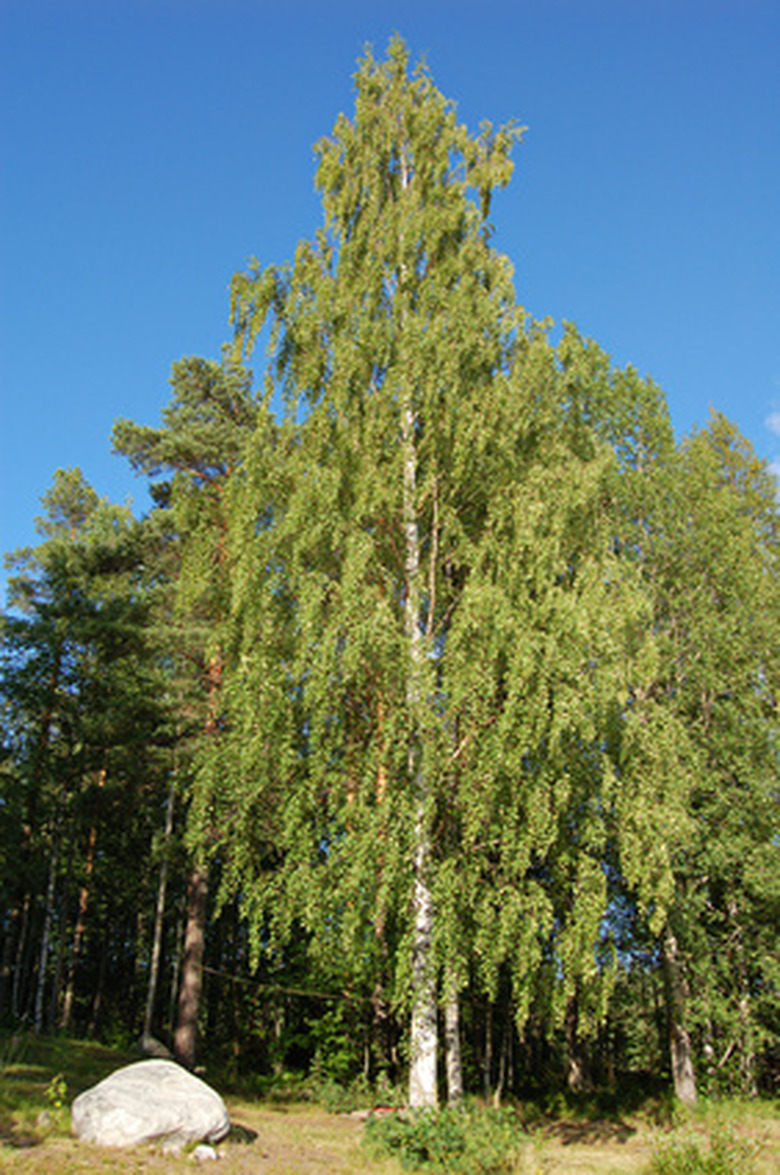Birch Tree With Worms
The "worms" that most often appear on birch trees are not true worms; they are larvae. Bagworm larvae are black; two other insects, the Birch Leaf Miner and the Bronze Birch Leaf Borer, produce slender white larvae that look like worms.Those larvae feed on birch leaves.
Bagworms
The bark and foliage of your birch tree may contain little bags containing the eggs of bagworms, Thyridopteryx ephemeraeformis, a member of the moth family. Black larvae emerge from the bags and descend on silk strings searching for a host plant. The wind sometimes blow the larvae away. When they find a host, they form their own bags and begin feeding on the tops of leaves, causing small brown spots. They poke their heads out to eat then withdraw into their bags, closing them tightly.
- The "worms" that most often appear on birch trees are not true worms; they are larvae.
- Bagworm larvae are black; two other insects, the Birch Leaf Miner and the Bronze Birch Leaf Borer, produce slender white larvae that look like worms.
Treating Bagworms
You can remove the bags of bagworms by hand or use insecticides in the early spring. The extension center of Ohio State University recommends insecticides containing the active ingredients acephane, bendiocarb, bifenthrin, carbaryl, chlorpyrifos, cyfluthrin, diazinon, dimethoate, fluvalinate, malathion, nicotine sulfate, pyrethrum, perethrin, rotenone and trichlorfon.
For an organic option, apply the bacterial spray containing Bacillus thuringiensis, a soil-borne bacterium that occurs naturally in the stomachs of certain moths and butterflies.
Birch Leaf Miner
The Birch Leaf Miner, Fenusa pusilla, is related to ants, bees and wasps. In April, the adults begin laying eggs on developing leaves. The eggs hatch and flat, gray or white larvae, about a half inch long and resembling tiny worms or caterpillars, begin feeding on the leaves, causing ugly brown splotches. They spin silken webs that they use to descend to the ground, or they simply fall to the ground. They form pupae on the ground and adults emerge two weeks later and the cycle continues.
- You can remove the bags of bagworms by hand or use insecticides in the early spring.
- The eggs hatch and flat, gray or white larvae, about a half inch long and resembling tiny worms or caterpillars, begin feeding on the leaves, causing ugly brown splotches.
Treating Birch Leaf Miner
Horticulturalists at the University of Delaware recommend spraying when the leaves are half expanded and again in late June if damage is unusually high. They recommend insecticides containing the active ingredients acephate, azadirachtin carbaryl, dimethoate, disulfoton and malathion.
Bronze Birch Leaf Borer
The adult Bronze Birch Leaf Borer, Agrilus anxius, is a slender beetle with a metallic-coppery appearance. The mature larvae are white, segmented, legless grubs about a half inch long.These worm-like larvae feed on the tissue just below the bark that transports nutrients from the canopy to the roots. The starved roots grow more slowly and are unable to function normally. Starting at the upper crown, the tree begins to die.
Treating Birch Leaf Borer
Researchers at the University of Minnesota recommend treating Bronze Birch Borer with insecticides containing the active ingredients bendiocarb, chlorpyrifos, dicrotophos and permethrin. Apply in late May and in mid and late June.
- Horticulturalists at the University of Delaware recommend spraying when the leaves are half expanded and again in late June if damage is unusually high.
